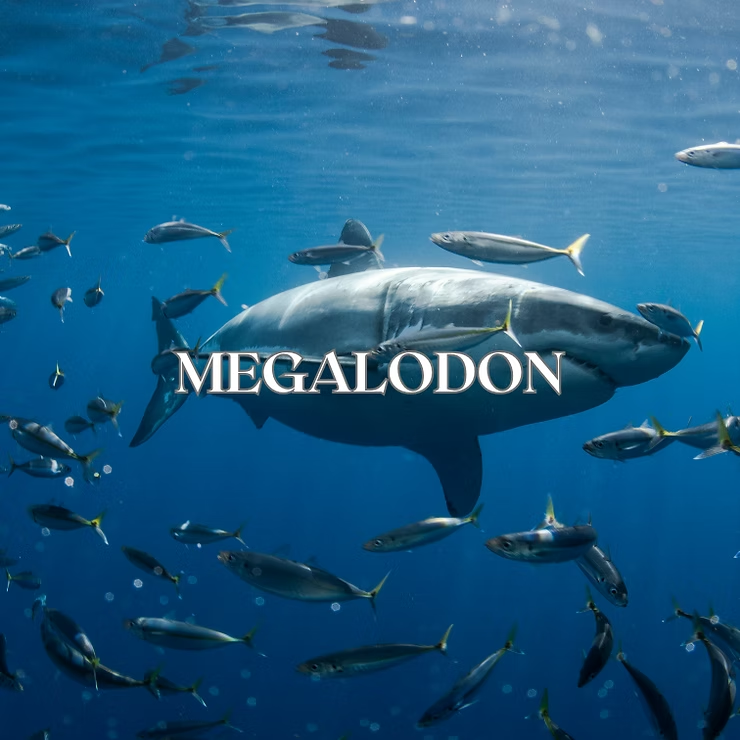Megalodon: The Largest Shark in History
Megalodon, the ultimate apex predator of prehistoric seas, remains one of the most fascinating creatures ever to exist. With its massive size, powerful bite, and dominance over marine life, this ancient shark has become legendary. While it went extinct millions of years ago, its fossil records and cultural impact ensure that its legacy continues today.
Size and Power
Megalodon was unmatched in size and strength. Fossil evidence suggests it could reach up to 60 feet in length—three times larger than a modern Great White Shark. Its bite force is estimated at 20 tons, the strongest of any known animal, easily capable of crushing whale bones. Its teeth, serrated and dagger-like, were perfect tools for tearing flesh and asserting dominance over the oceans.
- Length: up to 60 feet
- Bite force: around 20 tons
- Teeth: up to 7 inches long with serrated edges
Hunting Techniques
With its immense power, Megalodon primarily hunted large marine mammals such as whales and seals. It used ambush strategies, attacking from below with overwhelming force, or chased prey in open waters. Its ability to crush bones and rip through thick blubber cemented its status as the apex predator of its time.
Evolutionary History
Megalodon ruled the oceans from about 23 million to 2.6 million years ago. Thought to have evolved from earlier giant sharks, it spread across the globe, thriving in warm seas. Its extinction is linked to climate change, declining prey populations, and competition from smaller but efficient predators like early Great White Sharks.
Fossil Records
Much of what we know about Megalodon comes from fossilized teeth and vertebrae. These remains, found on every continent except Antarctica, reveal its widespread distribution. A single tooth, often larger than a human hand, is enough to spark awe at the scale of this giant.
Comparisons to Modern Sharks
Today’s largest predator, the Great White Shark, grows up to 20 feet, making it far smaller than Megalodon. While Great Whites feed mainly on fish and smaller marine mammals, Megalodon specialized in whales, using brute force and stealth. This comparison underscores just how extraordinary Megalodon truly was.
Fact or Fiction?
Controversies and Hoaxes
Popular culture often revives the idea that Megalodon may still roam the deep oceans. However, scientific evidence confirms its extinction around 2.6 million years ago. Hoaxes and speculative documentaries may stir debate, but no credible proof of its survival exists.
Scientific Evidence
Fossils—especially teeth up to 7 inches long—provide clear evidence of Megalodon’s existence. Comparative studies with modern sharks help reconstruct its behavior and anatomy. While no full skeleton has been discovered, the weight of scientific data supports Megalodon as a prehistoric predator, not a modern-day survivor.
Legacy and Impact
Even in extinction, Megalodon continues to capture human imagination. Movies, documentaries, and books depict it as the ultimate ocean monster. Scientists, meanwhile, study its fossils to better understand shark evolution and ocean history. Its story is both science and legend—reminding us of Earth’s past giants and the mysteries that still lie beneath the waves.
Frequently Asked Questions
- How big was Megalodon? Up to 60 feet long, three times larger than a Great White.
- What did Megalodon eat? Large marine mammals like whales and seals.
- When did Megalodon go extinct? Around 2.6 million years ago during the Pliocene epoch.
- Are there living Megalodons today? No, all scientific evidence confirms extinction.
- How do scientists study Megalodon? Through fossilized teeth and vertebrae comparisons with modern sharks.
- What is the largest shark alive today? The whale shark, which grows up to 40 feet.
Key Takeaways
- Megalodon was the largest shark ever, reaching lengths of up to 60 feet
- Its bite force was stronger than any known animal in history
- It hunted whales and seals using ambush and pursuit tactics
- Fossil evidence confirms extinction 2.6 million years ago
- Its legacy endures through science, culture, and ongoing fascination

